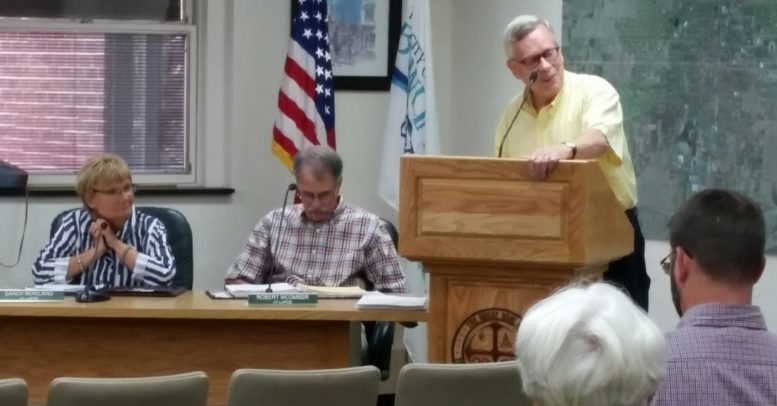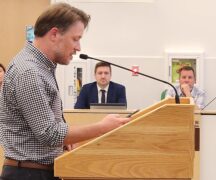By JAN LARSON McLAUGHLIN
BG Independent News
After months of thinking no one at the Ohio EPA was listening, Bowling Green officials are being promised a meeting on the Nexus pipeline.
Mayor Dick Edwards reported to City Council Monday evening that he had received a “long awaited and very welcomed” phone call from Ohio EPA Director Craig Butler. Butler assured the mayor that the EPA is aware of the city’s concerns about the proposed Nexus pipeline being built so close to the Bowling Green water treatment plant.
Butler reportedly said EPA staff and Ohio Geological Commission staff are in the process of reviewing documents sent to them from Bowling Green officials, including a concerning report prepared by BGSU assistant professor Andrew Kear. When those reviews and analyses are completed, Butler and his staff plan to share their findings in a meeting with the mayor, council, staff and members of the board of public utilities. The meeting will be public.
The mayor said the EPA director also offered to facilitate further communications, including a possible meeting with the Federal Energy Regulatory Commission, the body that rules on pipeline projects.
Edwards expressed gratitude to Butler, State Senator Randy Gardner and environmental attorney Mary Ellen Hogan, for helping to arrange the communication.
Butler reportedly told Edwards that the Ohio EPA had been very focused on the problems being caused by the Rover pipeline crossing the state. But he promised the Nexus project will also get a proper review. “We’re going to give it our best scientific review,” the mayor said Butler told him about the Nexus pipeline. “I appreciate it.”
Edwards said he voiced concerns about the pipeline being located 700 yards from the city’s water reservoir and “state-of-the-art” water treatment plant. Butler was aware of the city’s advanced plant, which the city has invested in excess of $10 million.
Council member John Zanfardino thanked the mayor for not giving up in his pursuit to protect the water plant. “Thanks for your explanation and your persistence,” he said to Edwards.
Earlier in the City Council meeting, citizen activist Lisa Kochheiser reported to council that she had gotten a response from the Ohio EPA, when Bowling Green city officials could not. The response did not offer any study of possible risks from the pipeline.
“All they can do for us, is if the pipeline is built and an accident occurs, they will help with the cleanup,” Kochheiser said.
She encouraged the council to file a motion to intervene to stop the pipeline, and to support a charter amendment that may appear on the Bowling Green’s November ballot that would allow the city to keep out harmful projects.
“Why does a pipeline company have more right to poison our water than our right to protect our water,” Kochheiser asked.
But Edwards cautioned that the motion to intervene is a costly venture, with no guarantee of success. “This is not something where you just stick your big toe in the water and run away,” he said.
The mayor also said that if the city had filed such a motion, city officials would not be having conversations with the Ohio EPA or FERC, since the matter would then be in the hands of the courts.





